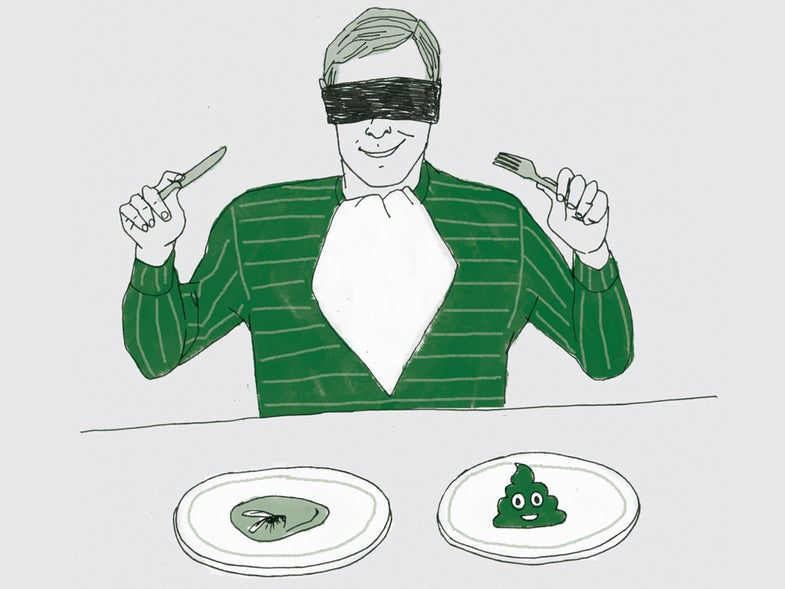To identify 100-million-year-old amber, consider licking it
A fossil-hunting fail from a curator of invertebrate paleontology.

↑ Ryan C. McKellar, Curator of Invertebrate Paleontology, Royal Saskatchewan Museum
I study insects trapped in amber—the only remains of long-dead creatures that lived up to 100 million years ago. One of the few places where you’ll find amber fossils from the Late Cretaceous epoch, around 78 million years ago, is an abandoned pit mine in Alberta, Canada.
Every rainstorm washes away more coal to reveal chunks of amber. It fluoresces green if the sun hits it, making it easy to spot, but usually all the dust covers it and makes everything on the ground look like coal. You’re crawling across the surface trying to pick out these little spherical masses less than 1 centimeter across, dark lumps sitting on a dark gray background. You want to work fast—you have only a few days to collect thousands of samples, and if you sit still for too long, ticks will come for you.
Wetting a chunk is the fastest way to get rid of that tricky dust to reveal the amber underneath. But you don’t want to reach for your water bottle a thousand times a day—it’s quicker just to lick the chunk. Coal is gritty, but luckily it doesn’t taste like much. Unfortunately, the mine is close to jackrabbit territory. When I worked there while getting my doctorate, I found my fair share of bunny poop. I licked too fast to really taste anything, but I haven’t been a big fan of rabbits since.
As told to Sara Chodosh
This article was originally published in “Tales from the Field” section of Popular Science’s Summer 2018 Life/Death issue.